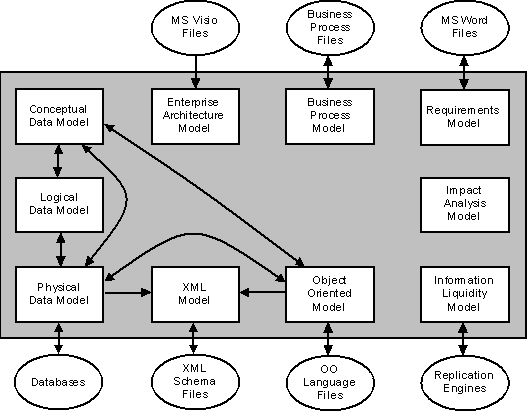

Chapter 2 Getting Started with PowerDesigner
Linking and synchronizing models
PowerDesigner's sophisticated inter-model and code and database generation capabilities allow you to synchronize your models and applications to provide you with control over each and every modification.
The following illustration shows how PowerDesigner models can import and export various file types and be generated from other models:

Additional forms of linking are provided by:
- Requirements traceability links - allow you to associate an object with a requirement. For more information, see the Requirements Modeling
guide.
- Enterprise architecture objects – can be associated with objects in other models. For more information, see the Enterprise Architecture Modeling
guide.
- Business process data – can be associated with objects in CDMs, PDMs, and OOMs. For more information, see the Business Process Modeling
guide.
- Information liquidity inputs and outputs – are provided by BPMs, PDMs, and XSMs. For more information, see the Information Liquidity Modeling
guide.
- Shortcuts and replications - allow you to reuse an object from one model in another. For more information, see the Shortcuts and Object Replications chapter.
- Extended links and extended dependencies - allow you to link any object in any model to another. For more information, see the Objects chapter.
PowerDesigner provides powerful tools to analyze the dependencies between model objects. For more information, see the Impact and Lineage Analysis chapter.
|
Copyright (C) 2008. Sybase Inc. All rights reserved.
|

|



